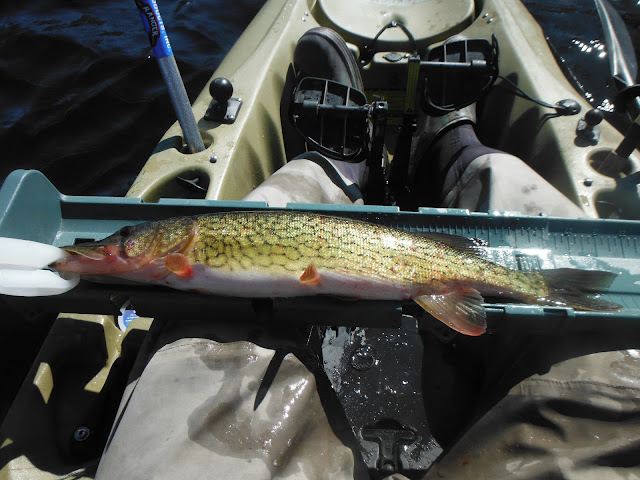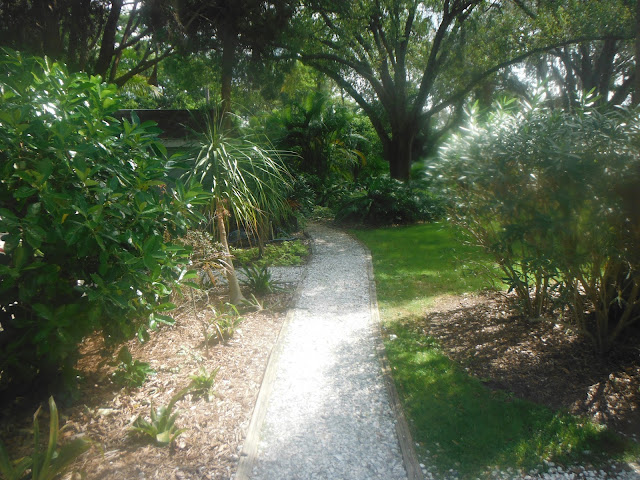For early season freshwater, I can't emphasize the value of carrying a wide variety of Rapalas. Carrying different models of Rapala plugs that swim at varying depths can make or break a trip. I swear by these plugs in freshwater, and am starting to use them more and more in saltwater as well. Today, I brought out plugs that could run the spectrum of depths at Forge. The jointed rapalas and X-Raps weren't getting deep enough. The Taildancer was almost in the zone, but not quite deep enough. So, I moved to the Shad Rap family. The glass Shad Rap was running into the algae, but the regular Shad Rap could be casted and jigged, and the Shallow Shad Rap was running at the perfect depth. All of my fish were caught on a very small Shallow Shad Rap.
I launched at 11:30 am. Tim MacNamara was already out by the time I got out to the main lake.
Not long after that, I caught my first fish, an 12" perch trolling. A few minutes later, I caught a 12" crappie jigging a Shallow Shad Rap.
It slowed down after that. With the WNW wind, I decided to go on a long drift across the length of the lake and caught nothing.
So, I trolled back to some reliable holes on the other end of the lake. Almost immediately, I caught a 18" pickerel on a Shallow Shad Rap. This pickerel was clean and appeared not to be spawning.
I was getting numerous pickerel follows jigging the regular Shad Rap - pickerel came boatside at least four different times in hot pursuit, but didn't want to take it.
After catching the last pickerel, I decided to go in. As usual, Tim was there for the long haul and stayed on. I've got a feeling that he caught a few fish today as well.
Although today was an improvement, it is still a little slow on Forge, but worth the trip. Between today and the subsequent warm front, the fishing will get better every day. I didn't bring my fishfinder, so no water temps. Air temp was 48 degrees at 11:30 am and 47 degrees at 2 pm.





















































